
Deer Gestation Period
The deer gestation period depends on its species. Other factors, such as season, can also play a part in how long deer carry their young before delivery. If you’re a hunter, it’s important that you
Learn all about the mating habits and reproductive cycle of deer. Discover the unique behavior of deer during the annual rut, and how deer care for and protect their fawns.
Like all species, deer have unique habits when it comes to mating, reproduction, and protecting their offspring.
The articles on this page will offer an introduction to how deer find and choose their mates, reproduce, carry their young to term, and deliver and care for their fawns.
Scroll down to learn about the life cycle of deer.

The deer gestation period depends on its species. Other factors, such as season, can also play a part in how long deer carry their young before delivery. If you’re a hunter, it’s important that you
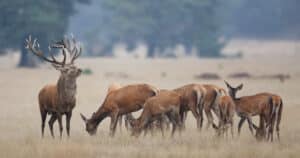
In any discussion of deer mating habits, it’s important to note that different deer mate in different ways. But in general, most species of deer are polygamous. This means that one successful male mates with
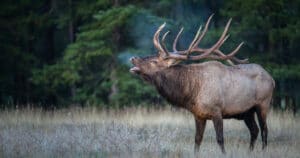
If you’ve ever found yourself in elk territory between September and October, you might have been lucky enough to hear the thrilling sound of an elk bugle call. This call is a sound like no
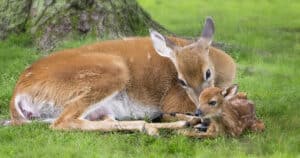
The life cycle of deer begins in the fall during the rutting season, with gestation occuring during the winter months and the arrival of fawns in the spring. Spring is the best time for deer
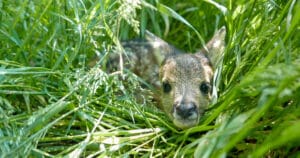
After a mother deer gives birth, she will do everything in her power to protect the fawn from predators. However, recent studies have shown that mother deer cannot distinguish the sound of their fawn’s cry.
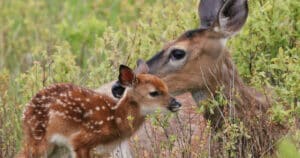
Each spring, deer populations get a brief spike as the changing season brings the birth of fawns. Both the characteristics and behavior patterns of fawns are remarkably similar across species. That said, there can be
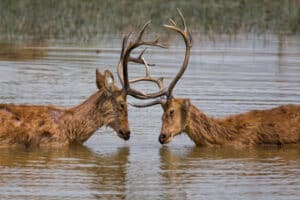
Males of the Barasingha are well known for the elaborate ritualised contests that they have during the rutting season. These contests follow a standard set sequence from beginning to end. Male Barasinghadeer have large complex antlers, which
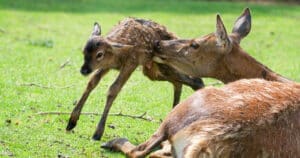
There are over 90 different species in the deer family (Cervidae) located across all regions of the world. There will be some variation in the local deer population depending on your area. However, there are
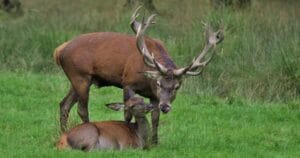
Deer reproduction is amongst the natural world’s most interesting cycles. For male deer especially, reproduction is the dominant force in a buck’s life. It occupies much of the year, but specifically when is deer mating
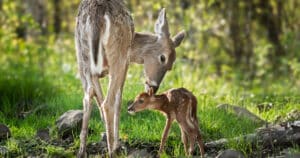
Depending on the position in the food chain, each creature is destined to follow a certain path of life. Whether that be prey or predator, one thing is common to all creatures in the animal
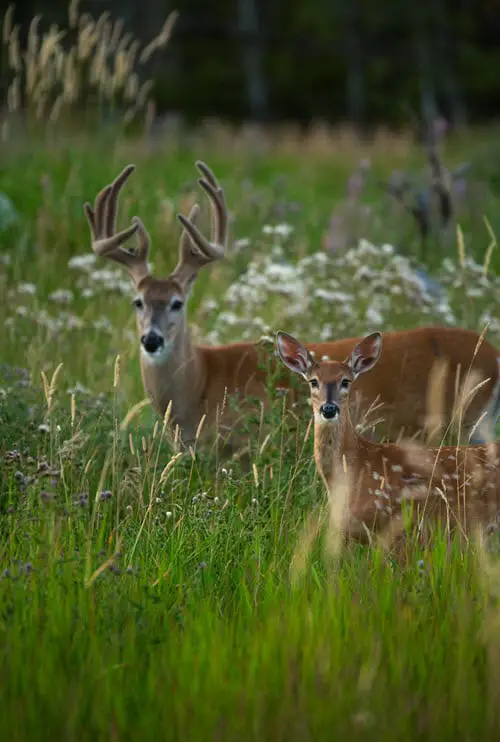 There are many different kinds of deer, and their life cycles can vary quite dramatically depending upon their species and the rhythms of their daily life.
There are many different kinds of deer, and their life cycles can vary quite dramatically depending upon their species and the rhythms of their daily life.
Some species of deer, such as Caribou, migrate each year, whereas other species of deer are more social than others and tend to live in large herds, like elk.
Some deer prefer a more solitary life, like Moose.
The life cycles of a deer will thus be different depending on the species and the unique behaviors of that animal. That said, most species of deer have important milestones and stages of life in common.
To keep things simple, the information below refers to the life cycle of White Tailed Deer, which is the most common species of deer in North America.
Below we’ll briefly discuss the 6 primary stages in a deer’s life cycle. These stages include:
Let’s dive in and learn about these important stages of a deer’s life and the developmental milestones and rhythms which define the life of many types of deer by looking closely at the normal cycle of a White Tailed Deer’s life.
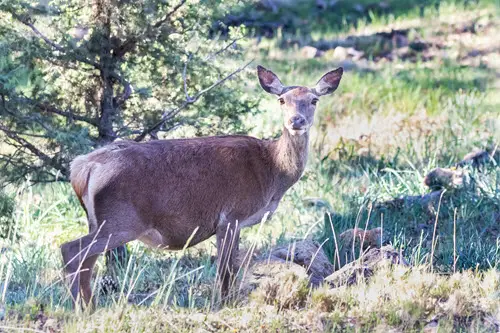
On average, the deer gestation period is between 200 to 205 days, though this can vary quite a bit depending on deer species.
Some species have a gestational period of nearly 300 days, but this is the exception rather than the rule.
Since most deer carry their young through the winter months, mothers must ensure they get adequate food leading up to mating season and during pregnancy to allow for the healthy development of their offspring.
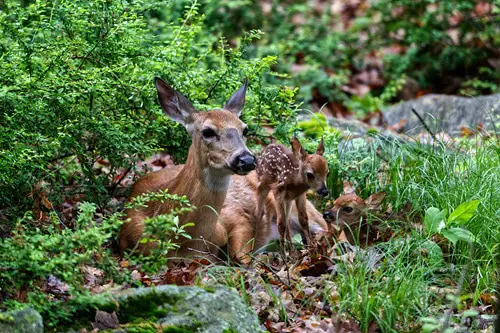
Mother deer will go away from their herd to give birth, sometimes leaving the herd several days before delivering their fawn so that they can be alone.
They tend to choose areas with high vegetation to protect themselves from predators. The young deer is then born head-first, and as soon as it is born, the mother will lick it clean to mask its scent from nearby predators. Within twenty minutes, the young deer should be able to stand.
While her fawn is still fairly young, the mother will find a hiding space covered with thick vegetation to leave the young deer while she goes to feed so that she can produce more milk until the young learns to feed on its own.
If you find a baby deer on its own, it doesn’t mean that the mother has abandoned the fawn. In fact, this is rarely the case. The young deer is simply waiting for her to return.
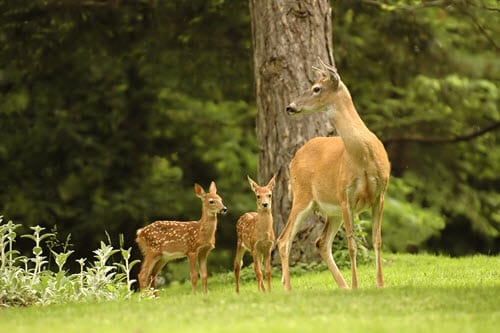
After a few weeks, deer will begin to feed on greens as they slowly wean off their mother’s milk. However, they will not completely wean off until they are about six months old, and the process is very slow.
Most young deer will remain with their mother until the mother gives birth to another deer, which is usually about a year later.
If the mother does not give birth again, some deer will still stay with their mother for another six months or so. Female deer tend to remain with their mother longer than male deer.
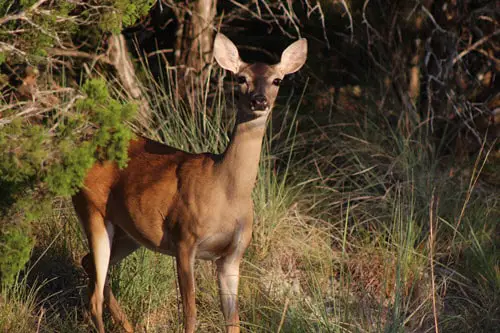
Though deer reach maturity within about a year, they normally wait longer to mate.
Mothers will drive away male offspring after about a year to avoid inbreeding, whereas female deer will remain with the mother for up to two years. Some female deer will spend their entire lives in the same herd, but herds can be broken up due to male rivalry, eventually forcing the females to separate and find other herds.
During their first year, deer are most vulnerable to predators since they are not under as much protection from their mother and are not as strong or experienced as older deer.
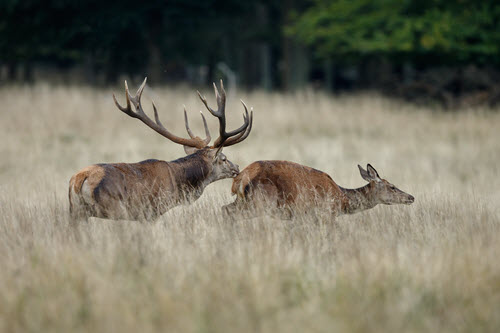
Female deer will mate for the first time at an earlier age than males. Females tend to mate at about eighteen months, whereas males would not be strong enough to compete with older male rivals at that point.
Deer are polygamous, and one male deer will mate with most of the female population in his herd. This means that only the strongest male deer will reproduce, whereas almost all females will.
A deer’s mating season is called the rut, and it will typically occur in the fall. This time is accompanied by a number of ritualized behaviors and mating rituals which vary slightly from species to species.
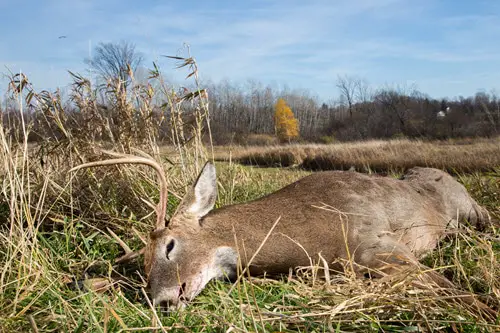
Eventually, all deer will also die, whether it be from predators, hunting, or other natural causes. Some think that when this happens, other members of the herd may mourn or experience a sort of grief, though there isn’t enough research to confirm this.
When a deer dies, its body will decompose and serve as food for other animals. This is a natural part of life, and it allows new deer to take its place in the local habitat, continuing the life cycle of deer in that ecosystem.